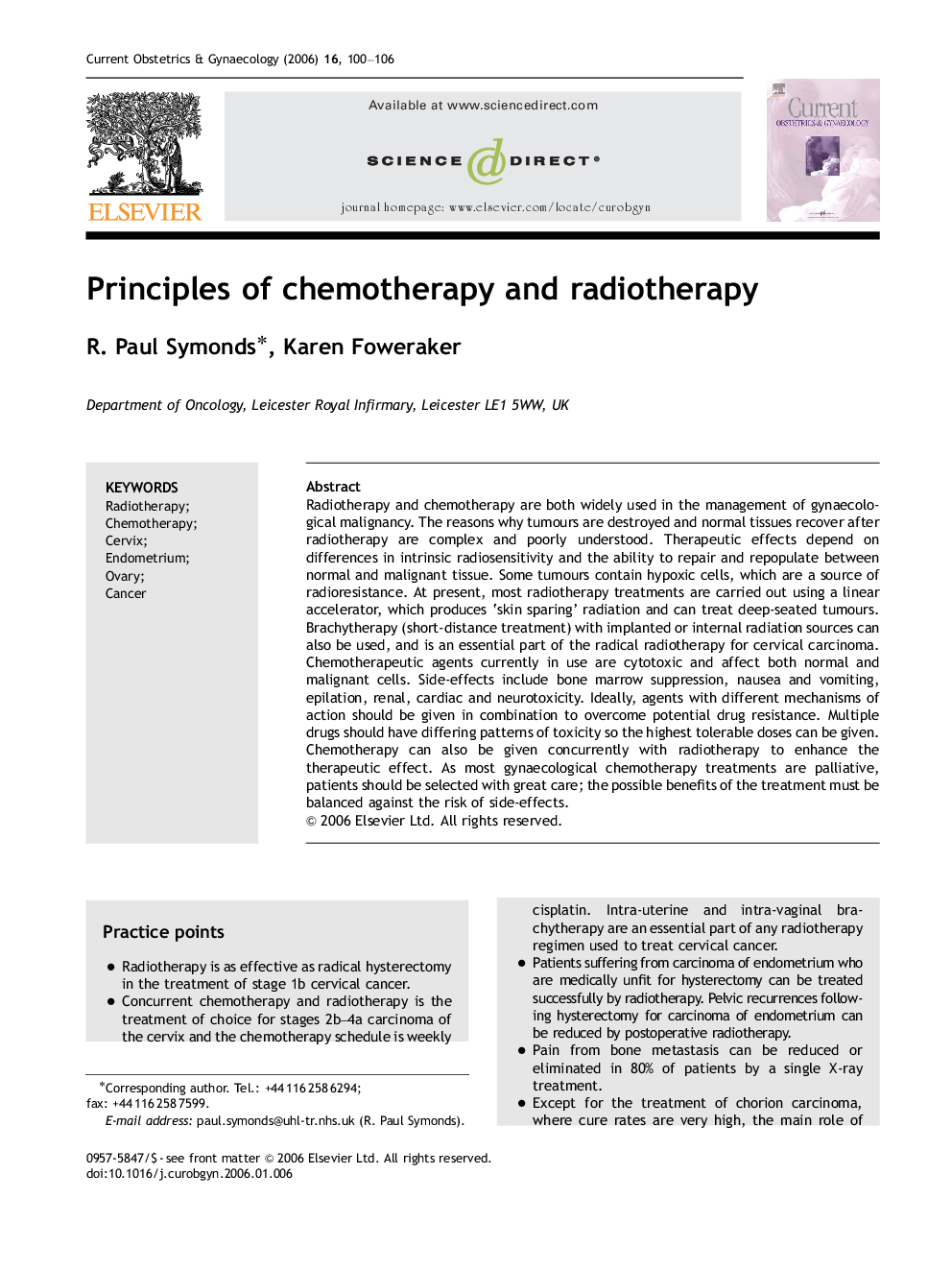| Article ID | Journal | Published Year | Pages | File Type |
|---|---|---|---|---|
| 3916325 | Current Obstetrics & Gynaecology | 2006 | 7 Pages |
Radiotherapy and chemotherapy are both widely used in the management of gynaecological malignancy. The reasons why tumours are destroyed and normal tissues recover after radiotherapy are complex and poorly understood. Therapeutic effects depend on differences in intrinsic radiosensitivity and the ability to repair and repopulate between normal and malignant tissue. Some tumours contain hypoxic cells, which are a source of radioresistance. At present, most radiotherapy treatments are carried out using a linear accelerator, which produces ‘skin sparing’ radiation and can treat deep-seated tumours. Brachytherapy (short-distance treatment) with implanted or internal radiation sources can also be used, and is an essential part of the radical radiotherapy for cervical carcinoma. Chemotherapeutic agents currently in use are cytotoxic and affect both normal and malignant cells. Side-effects include bone marrow suppression, nausea and vomiting, epilation, renal, cardiac and neurotoxicity. Ideally, agents with different mechanisms of action should be given in combination to overcome potential drug resistance. Multiple drugs should have differing patterns of toxicity so the highest tolerable doses can be given. Chemotherapy can also be given concurrently with radiotherapy to enhance the therapeutic effect. As most gynaecological chemotherapy treatments are palliative, patients should be selected with great care; the possible benefits of the treatment must be balanced against the risk of side-effects.
